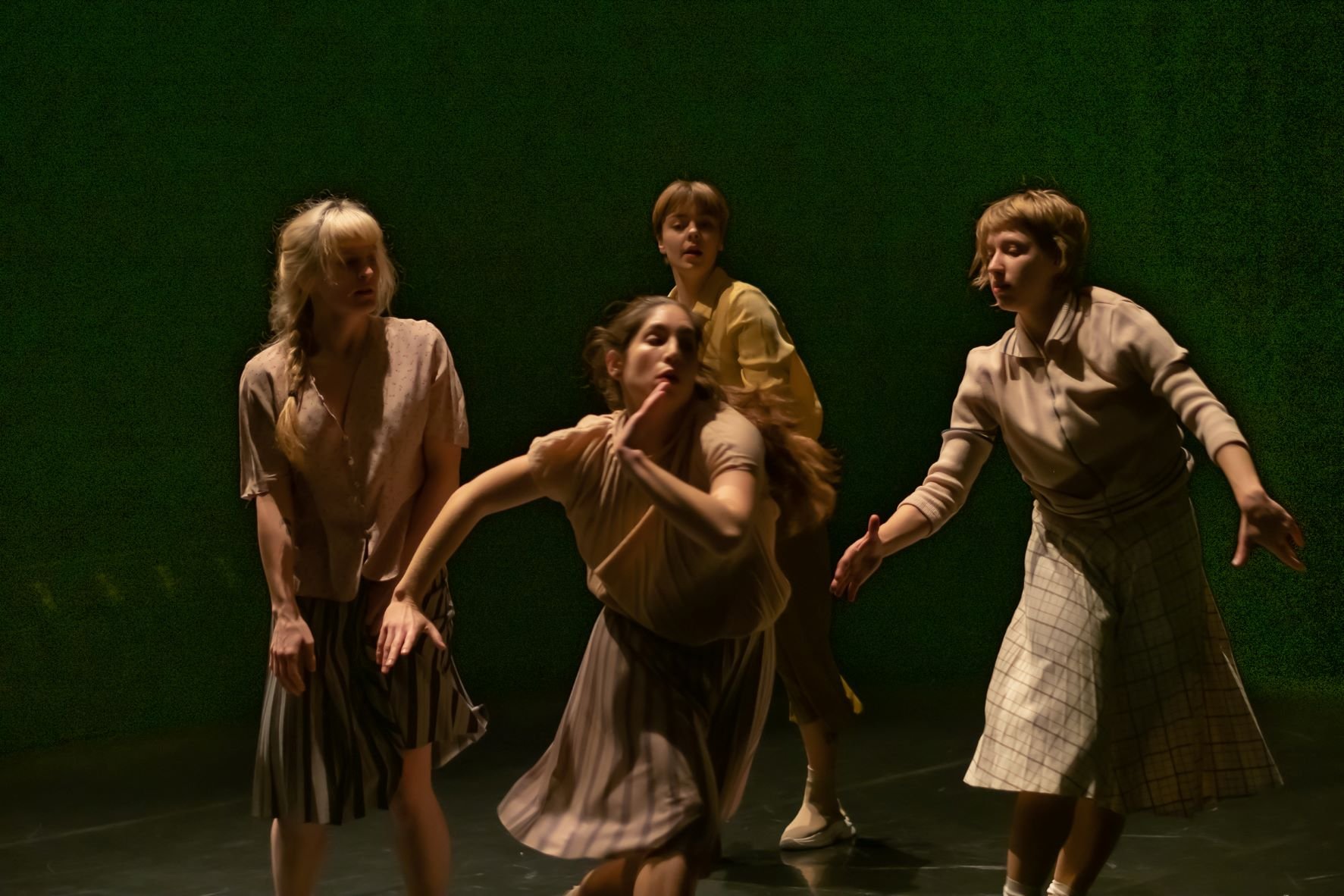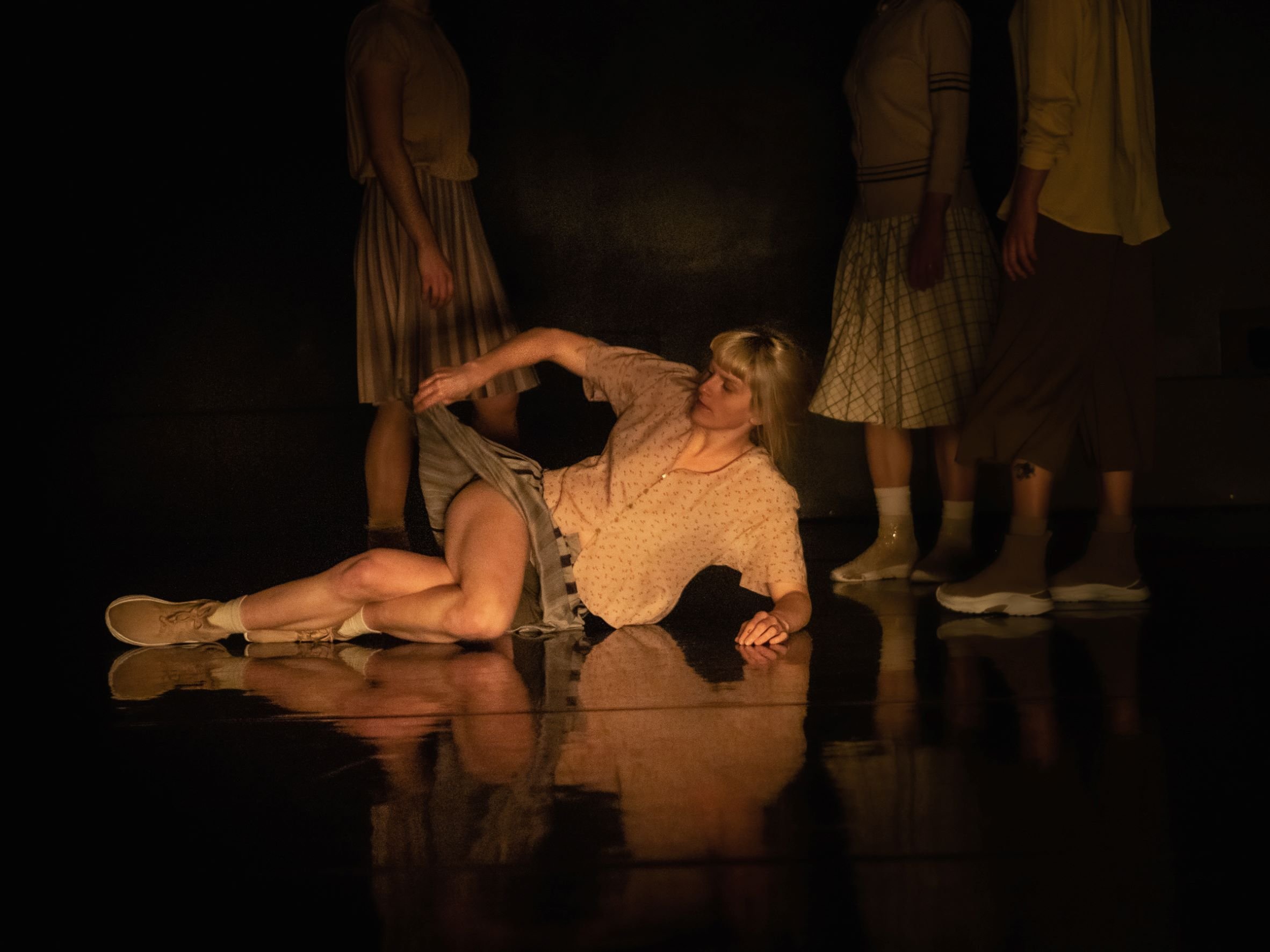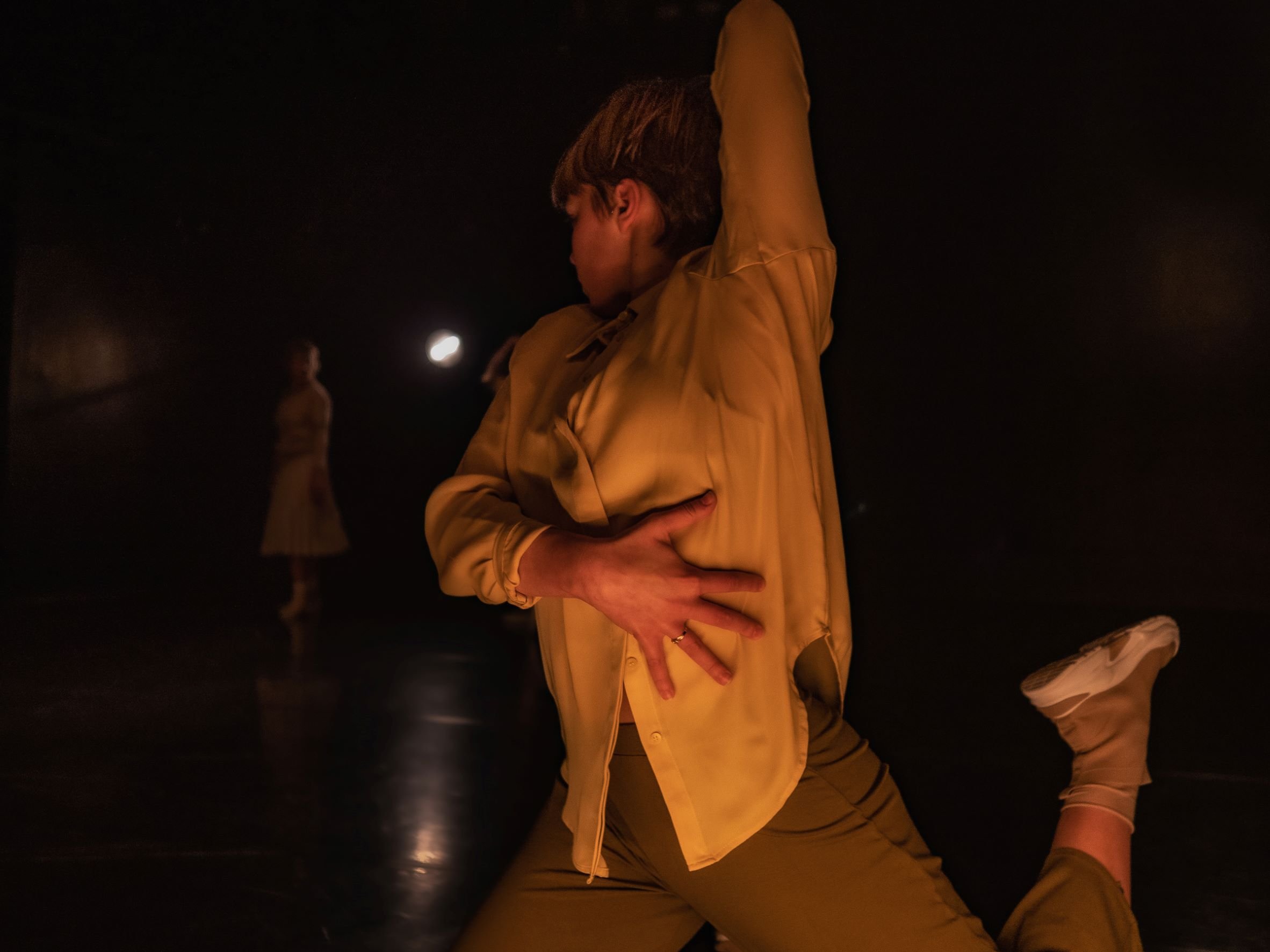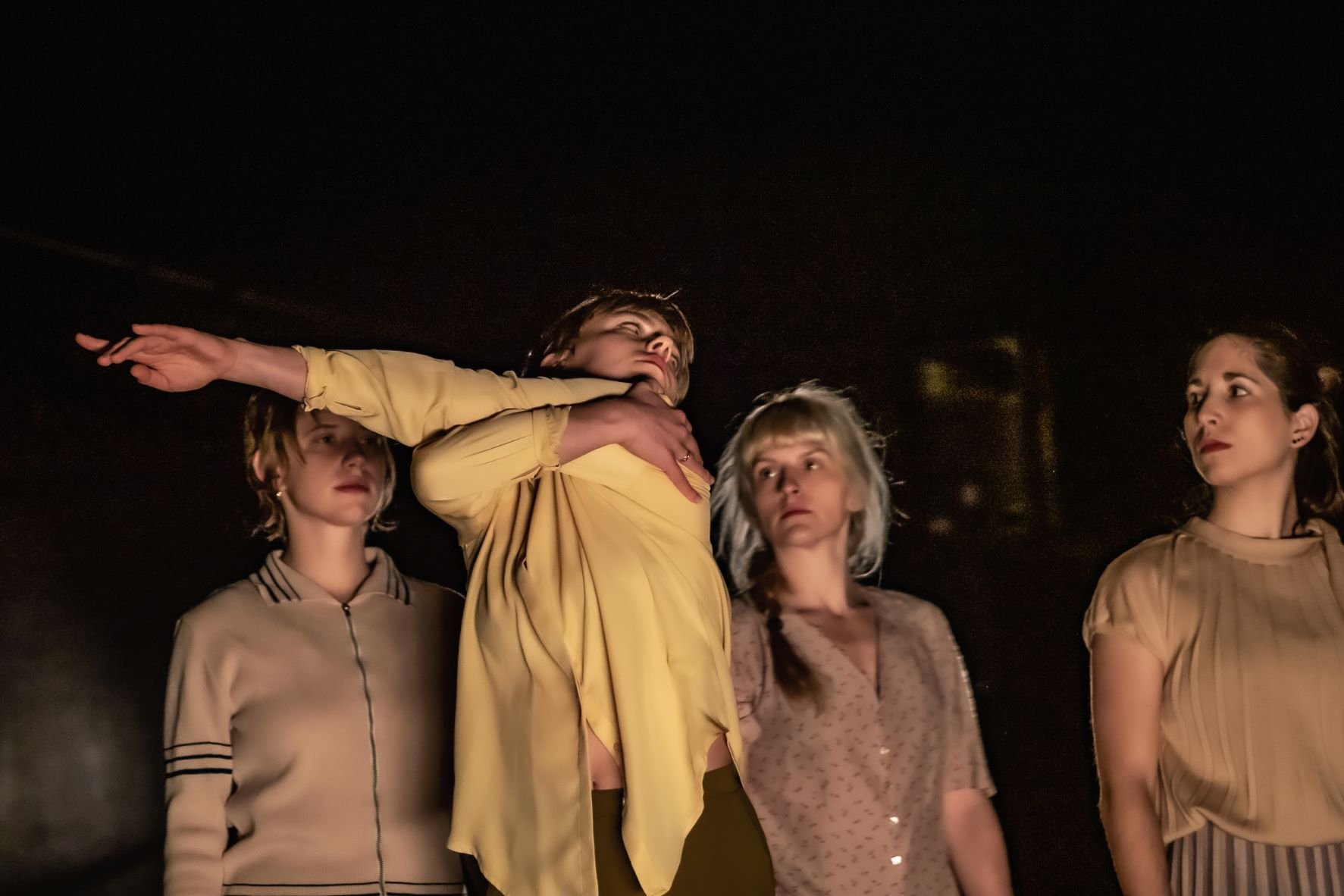Vita Osojnik
ZAČASNO ZADRŽANA TELESA / TEMPORARILY DETAINED BODIES
plesna predstava / a dance performance
Koncept, koreografija in kostumi / Concept, Choreography & Costumes: VITA OSOJNIK
Soustvarjanje in ples / Co-creation & Dance: ALJA BRANC, LARA MATEA IVANČIČ, EMA KRIŽIČ, JULIJA PEČNIKAR
Avtorska glasba / Original Music: MATEVŽ KOLENC
Oblikovanje svetlobe / Lighting Design: ALJAŽ ZALETEL
Kreativna producentka / Creative Producer: KATJA SOMRAK
Produkcija / Produced by: PLESNI TEATER LJUBLJANA
Predstava sodi tudi v Abonma Transferzala, abonma 6-ih ljubljanskih neodvisnih odrov (Center kulture Španski borci, Gledališče Glej, Stara mestna elektrarna - Elektro Ljubljana, Mini teater, Plesni Teater Ljubljana in Vodnikova domačija). Več: www.transferzala.si.
Abonma Transferzala lahko kupite v vseh šestih gledališčih, tudi v Plesnem Teatru Ljubljana, ali preko spleta: info@transferzala.si.
INFO. / REZ.: 041 365 184, ptl@mail.ljudmila.org, Moje karte
Vstopnice / Tickets: 10/8€ (dijaki, študenti, upokojenci / scholars, students, seniors), predhodna rezervacija ali uro pred predstavo v našem gledališču / booking in advance or an hour before the performance at our theatre
V skladu z odloki Vlade RS je udeležba na kulturnih dogodkih dovoljena osebam z negativnim testom na Covid-19, cepljenim ali prebolevnikom (PCT pogoj). / In accordance with the decrees of the Government of the Republic of Slovenia, participation in cultural events is allowed to people with a negative test for Covid-19, vaccinated or convalescent people (PCT condition).
Program Plesnega Teatra Ljubljana sofinancirata Ministrstvo za kulturo RS in Mestna občina Ljubljana, Oddelek za kulturo / The programme of Plesni Teater Ljubljana is subsidized by the Ministry of Culture RS and Municipality of Ljubljana, Department for Culture
Foto / Photo: DRAGO VIDEMŠEK
O predstavi
Predstava je nastala kot izpeljanka predstave Blance Arriete Začasno poravnana telesa, ki pa jo je Vita Osojnik dodatno poglobila v ekspresionistične črte risb Egona Schieleja.
Blanca Arrieta se je v projektu Začasno poravnana telesa opirala na ekspresionističnega slikarja Egona Schieleja. Vsebina je na koncu le bežno oplazila izvorno idejo, saj je predstava raziskovala predvsem minimalizem geste. Vita Osojnik, asistentka koreografinje pri projektu Arrietove, tokrat prevzame vlogo koreografinje. Koncept, ki ga je razvila, podrobneje proučuje izvorno idejo Schieleja in ji dodaja nekaj svojih svežih premis.
Naslov predstave je besedna igra, ki pretvori Blancin projekt v Vitinega. Preobrazba se zgodi tako na odru kot za njim. Skupina soustvarjalcev se iz prvotnih šestih skrči na štiri plesalce. Glasbena pokrajina je posebej ustvarjena za Zadržana telesa. Kostumografija poustvarja videz likov Egona Schieleja v vsej njihovi očarljivo razcapani zunanjosti, ki dodatno prihaja do izraza ob subtilnem oblikovanju luči. Svetloba nam razkrije njihove geste in poudari prostor v katerem se gibajo.
Predstava Začasno zadržana telesa tone globlje v melanholijo in provokacijo. Obe stanji sta tako zelo značilni za like, ki jih ustvarja Egon Schiele. Predstava pozornost usmerja tudi v samo ekspresivnost prostora.
Igranje z bližino, razdaljo, spremstvom in občasnimi dotiki pa razločno odražajo trenutno Covid-19 situacijo v našem prostoru.
About the performance
The performance was made as a consequent derivate of Blanca Arrieta’s pefrormance Realignments, but Vita Osojnik additionaly deepens the performance content into the expressionist lines of Egon Schiele’s sketches.
Blanca Arrieta grounded her project Realignments on the sketches of an expressionist painter Egon Schiele. That was the elementary idea, but her performance turned into the exploration of minimalistic gestures. Vita Osojnik who was an assistant choreographer to Arrieta’s project, now takes on the role of choreographer. The concept she developed thoughtfully studies the elementary Schiele idea as well as adding her own fresh premises.
The title of the performance is a word game that transforms Blanca’s project into Vita’s project. The renewal happens on the stage as well as behind it. Group of co-creators was reduced form original six to final four dancers. The music landscape is created specifically for detained bodies. The costume design recreates the presence of Egon Schiele’s characters. Their charmingly shabby outward appearance is even more emphasised with the subtle lighting. The light shows their gestures and highlights the space they move in.
The performance Temporarily detained bodies dives deep into melancholy and provocation. Both states are common features found in most of Egon Schiele’s sketches. The performance directs the attention also into the expressiveness of the space itself.
Playing with closeness, distance, accompaniment and occasional touches clearly reflect the current Covid-19 situation in our space.
Izseka iz kritik
»Nova koreografska postavitev se intenzivno barva in napaja v črtah ekspresionizma in portretih avstrijskega slikarja Egona Schielea, tudi sugestivno začrtanih rok, ko do izraza prihaja galerijski utrip ali pota, usmerjena v točko ogleda in zanimanja.« Daliborka Podboj, Parada plesa
“Za razliko od Človeka množice pa je v Začasno zadržanih telesih gib najintenzivnejši v solo materialu posameznice, ki je izpiljenim gestam telesno predana, medtem ko v stiku z drugo osebo jakost giba usahne. Hiperprodukcija dotika, ki jo predstava preigrava, preslikava kapitalistično diktirane odnose, ki izgubljajo na pomenu, saj še človeški stik postaja izdelek za enkratno uporabo. Idejno izčiščeni predstavi Človek množice in Začasno zadržana telesa mojstrice kompleksne kompozicije Vite Osojnik in dveh plesnih kolektivov nas s polno silo osvežita in kot izrazito gibalni predstavi spomnita na to, kako dobro je gledati plešoča telesa v živo.“ Tina Benko, Radio Študent
Excerpts from press reviews
“The new choreographic staging is intensely painted in and fuelled by the lines of expressionism and portraits of the Austrian painter Egon Schiele, also suggestively outlined hands, with the rising focus on the gallery pulse or the paths directed at the point of view and interest.” Daliborka Podboj, Parada plesa [Dance Parade]
“Contrary to Hombre Masa, the movement in Temporarily Detained Bodies is most intense in the solo material of the individual who is physically committed to refined gestures, with the intensity of movement fading in the contact with the other performer. The hyperproduction of touch re-enacted in the performance reflects relationships dictated by capitalism that are losing their meaning, as even human contact becomes a disposable commodity. The conceptually refined performances Hombre Masa and Temporarily Detained Bodies by the master of complex composition Vita Osojnik and two dance collectives refresh us with full force and remind us, as a distinctly movement oriented pieces, of how nice it feels to watch dancing bodies live.” Tina Benko, Radio Študent






